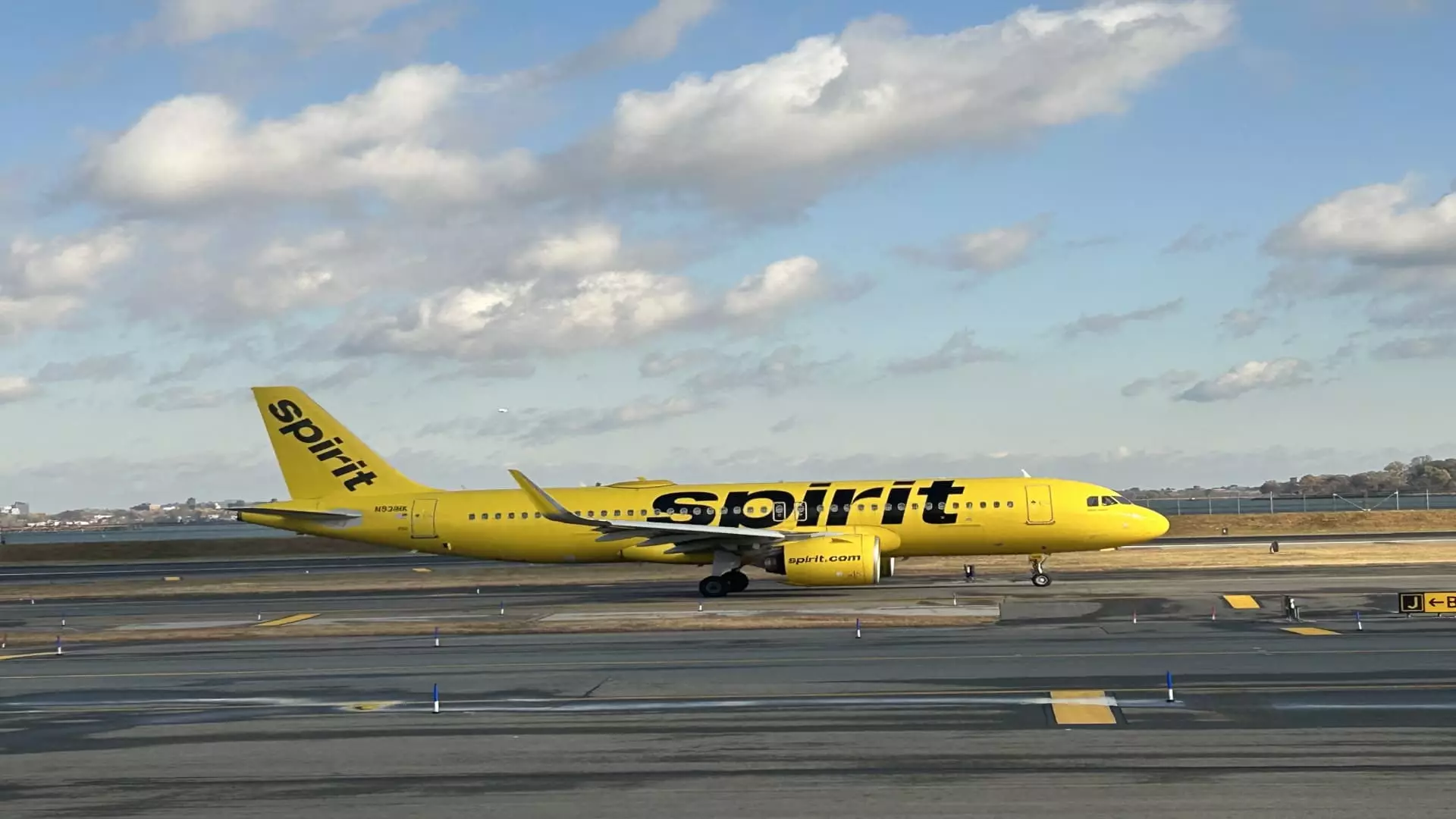In a significant move reflecting the gravity of its financial struggles, Spirit Airlines has announced the elimination of approximately 200 jobs as part of a broader strategy to reduce operational costs and streamline its organization. The announcement comes in the wake of the budget carrier’s Chapter 11 bankruptcy filing last November, a critical juncture that highlights the ongoing volatility within the aviation industry. Spirit’s leadership has emphasized the necessity of this reduction, claiming it is integral to realigning the company’s workforce with its current operational capabilities and fleet size.
Prior to the layoffs, Spirit Airlines employed nearly 13,000 individuals, with a significant proportion—around 84%—represented by unions. However, the recent job cuts primarily affect nonunion positions, illustrating the airline’s focus on managing costs while navigating the complexities of labor relations. The restructuring is part of a larger strategy that includes prior furloughs for pilots and voluntary leaves for flight attendants, all aimed at achieving significant budgetary savings.
The decision to reduce the workforce is a sobering reminder of the industry’s challenging environment, particularly for budget carriers that rely on high volume and low costs to remain competitive. While the job cuts will undoubtedly impact those involved, Spirit Airlines has stated its commitment to treating all affected employees with respect and consideration. This message underscores the duality of corporate decision-making during financial crises—where the necessity of cost-cutting measures must be balanced against the repercussions on employees.
Spirit’s operational woes can be traced back to a series of unfortunate events, notably the recent federal court ruling that halted its planned merger with JetBlue on antitrust grounds. The aborted merger would have significantly altered Spirit’s market position, potentially providing a much-needed pathway to financial stability. Coupled with other operational setbacks, such as a Pratt & Whitney engine recall and increased labor costs stemming from the pandemic, the airline’s journey has been fraught with difficulties.
As the company takes steps to downsize its workforce, it has also undertaken measures to improve liquidity, including the sale of some Airbus jetliners. Such moves are essential to stabilize financial footing, but they come with the risk of diminishing capacity and operational capabilities. This balancing act between scaling back operations and maintaining service levels is critical for Spirit as it seeks to emerge successfully from bankruptcy.
Spirit Airlines has set a goal to exit bankruptcy within the current quarter, positioning itself for a potential rebound. The company has pledged to identify additional operational efficiencies beyond the recent job reductions, anticipating an impressive $80 million in annualized cost savings. These efforts reflect a broader trend in the aviation sector as carriers reassess their business models and operational strategies amid evolving economic landscapes.
Ultimately, Spirit’s journey over the coming months will not only test its corporate resilience but also its ability to navigate the operational and financial complexities that have become all too common within the post-pandemic airline industry. The airline’s future will hinge on its capacity to restructure effectively while remaining responsive to the demands of both the market and its workforce.


Leave a Reply